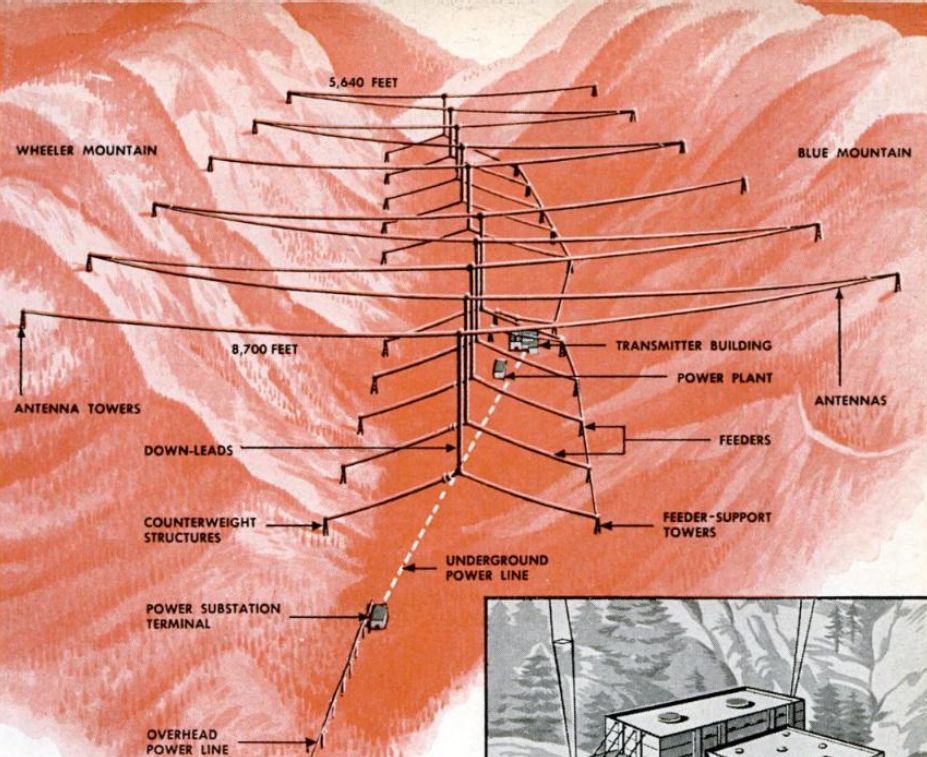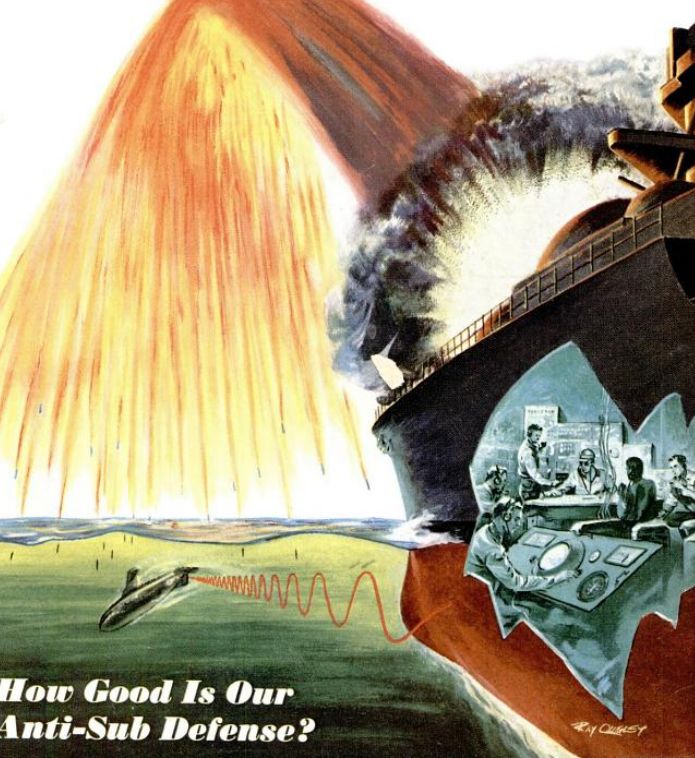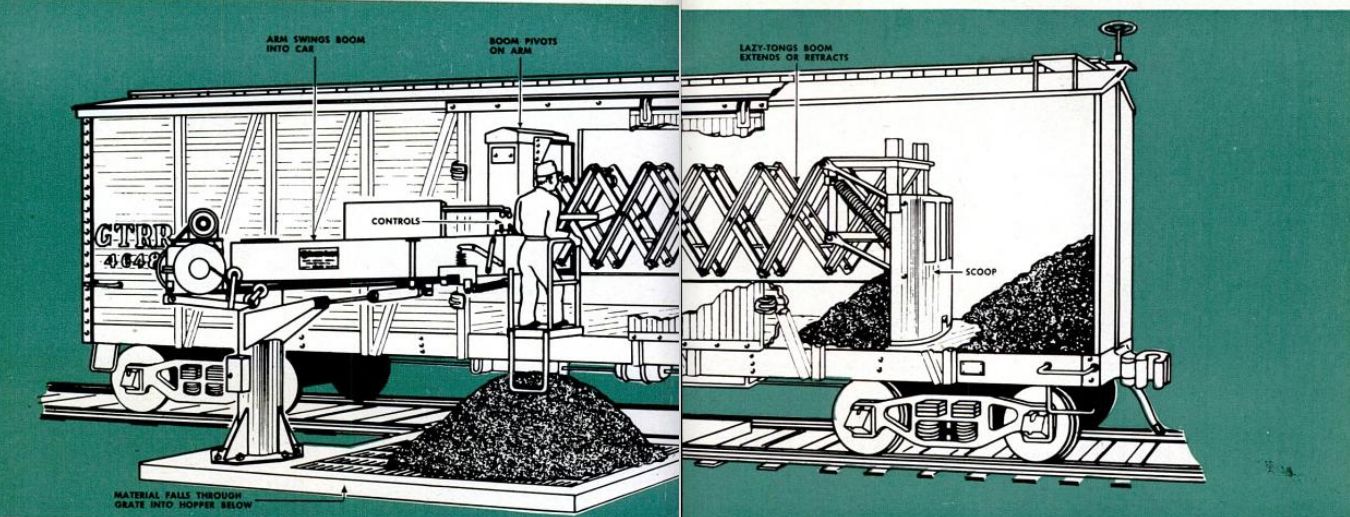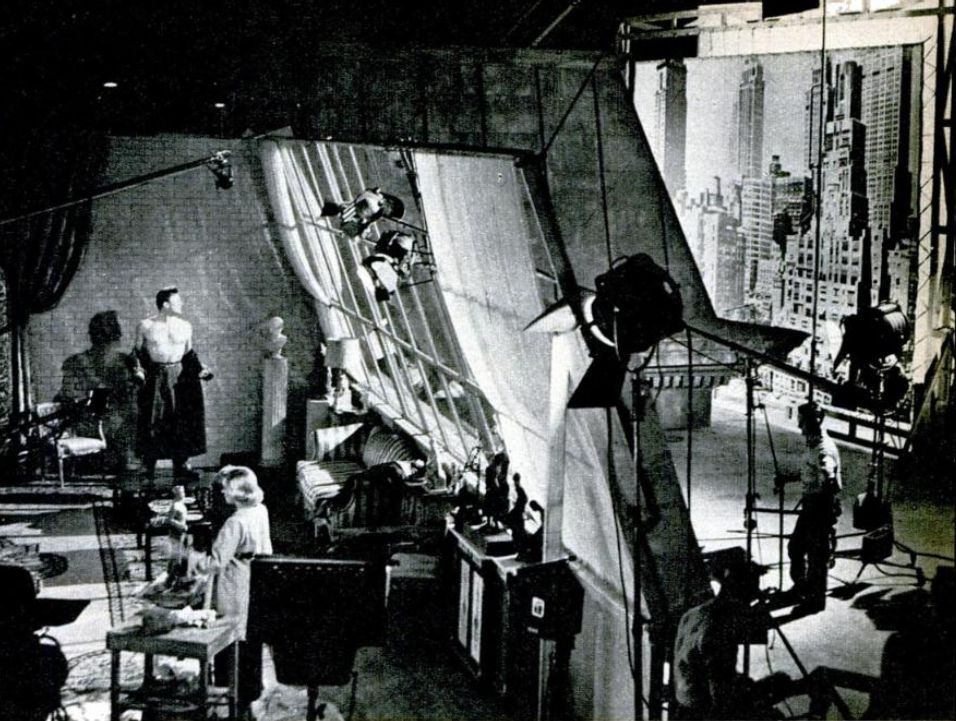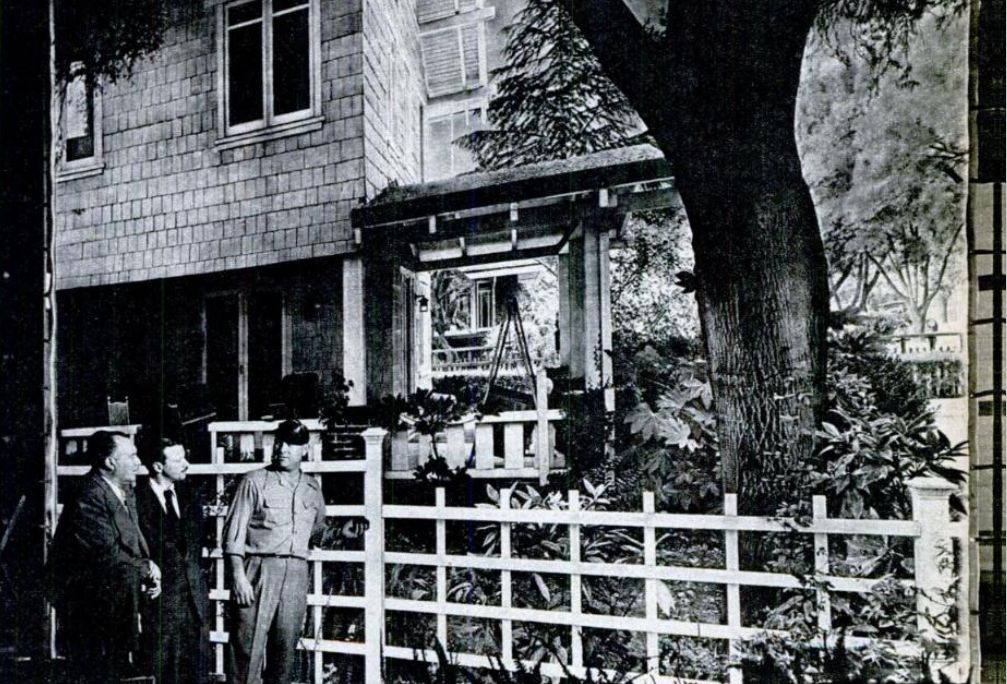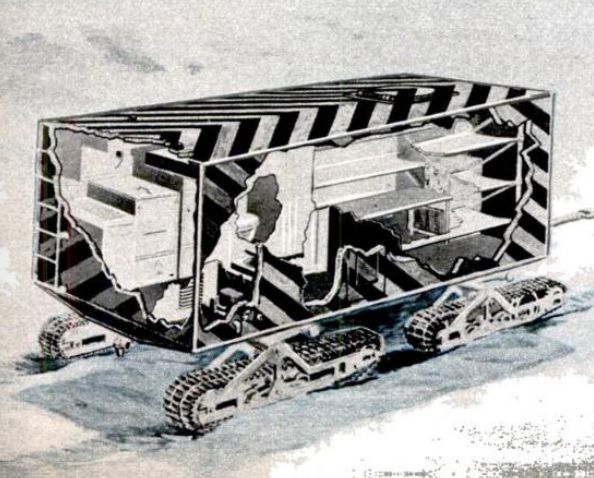Artist unknown, as this was a tossed-off illustration in the middle of a Popular Science, but what interested me:
- This is one helluva massive radio station.
- It’s still around.
It’s called the Jim Creek Naval Radio Station, and the Center for Land Use Interpretation tells us:
One of the world’s most powerful transmitters, this million watt Navy radio facility communicates with submarines at sea using very low frequency radio waves. Built in 1953 in the foothills of the northern Cascades, ten massive antenna cables, all more than a mile long, span the Jim Creek valley, suspended by twenty 200 foot tall towers.
Click to Enlarge to 927 x 757 px:
